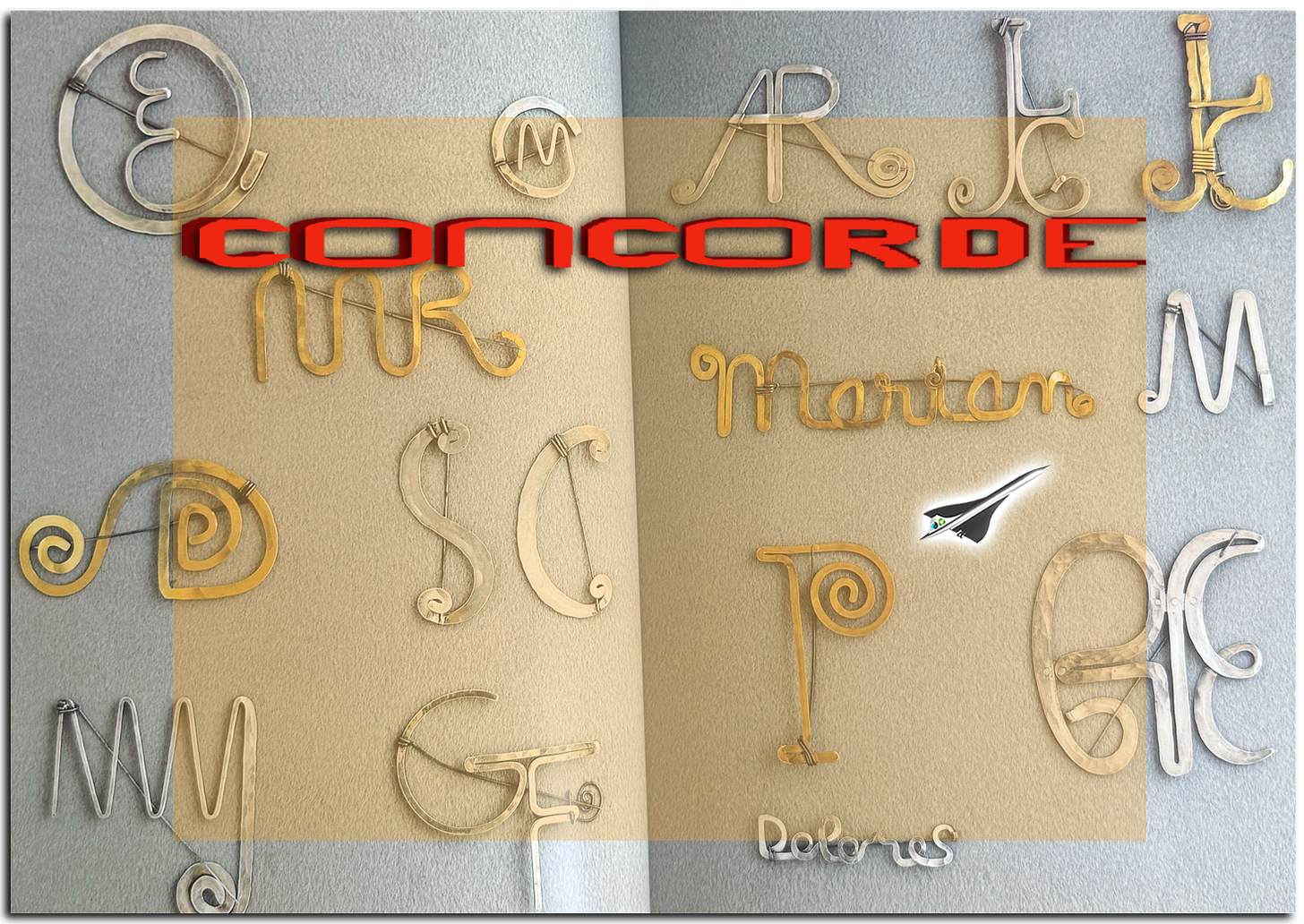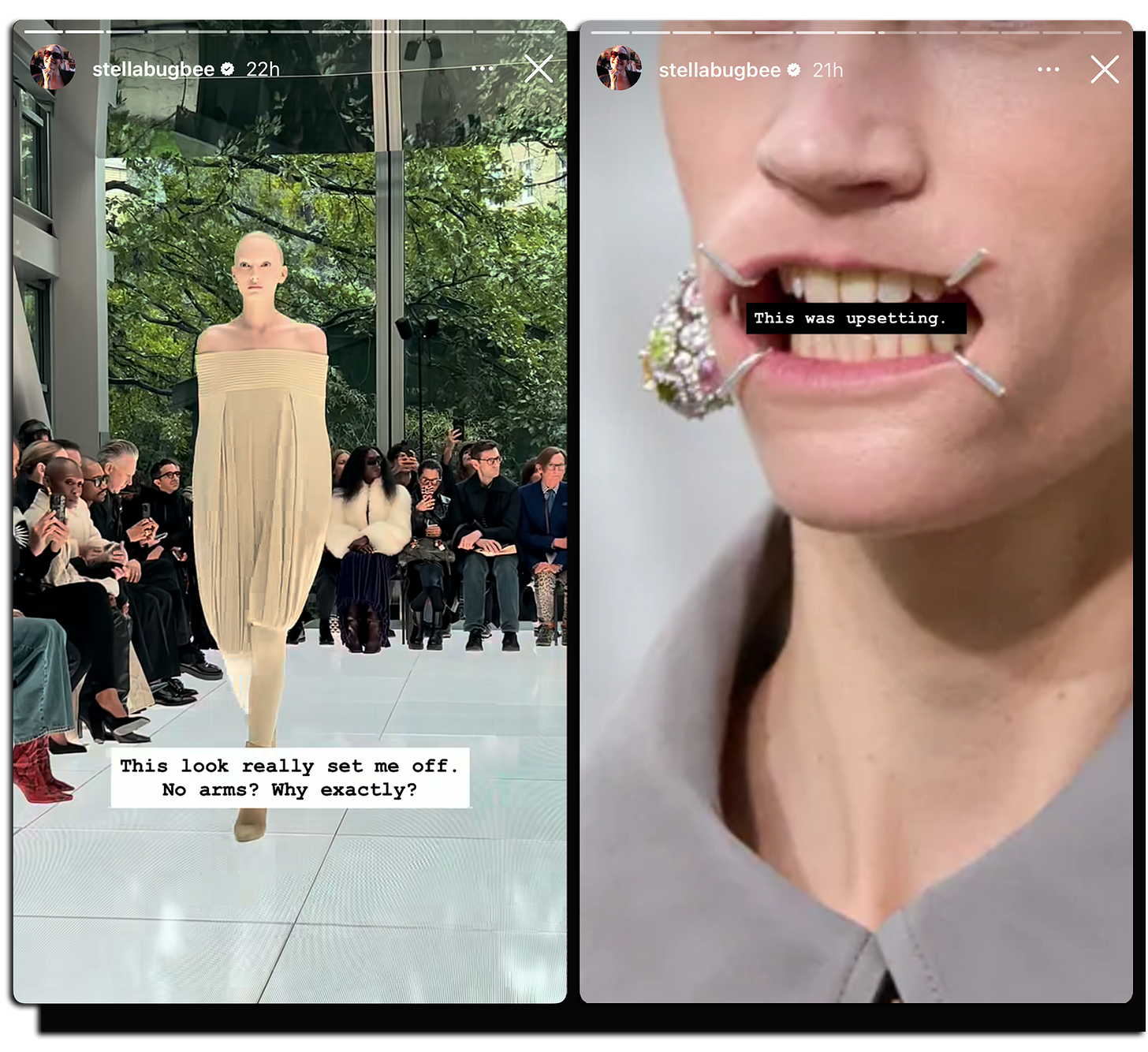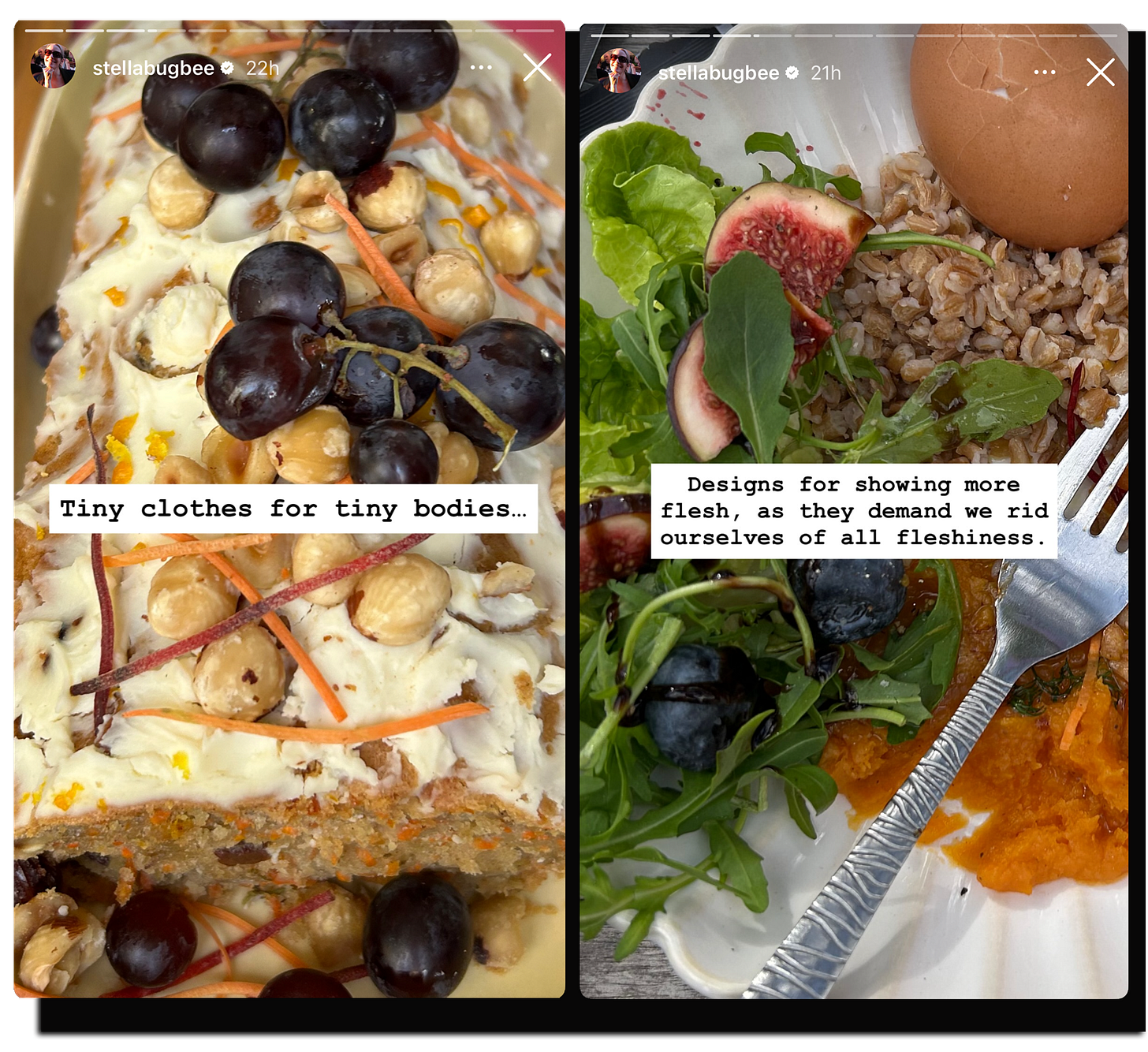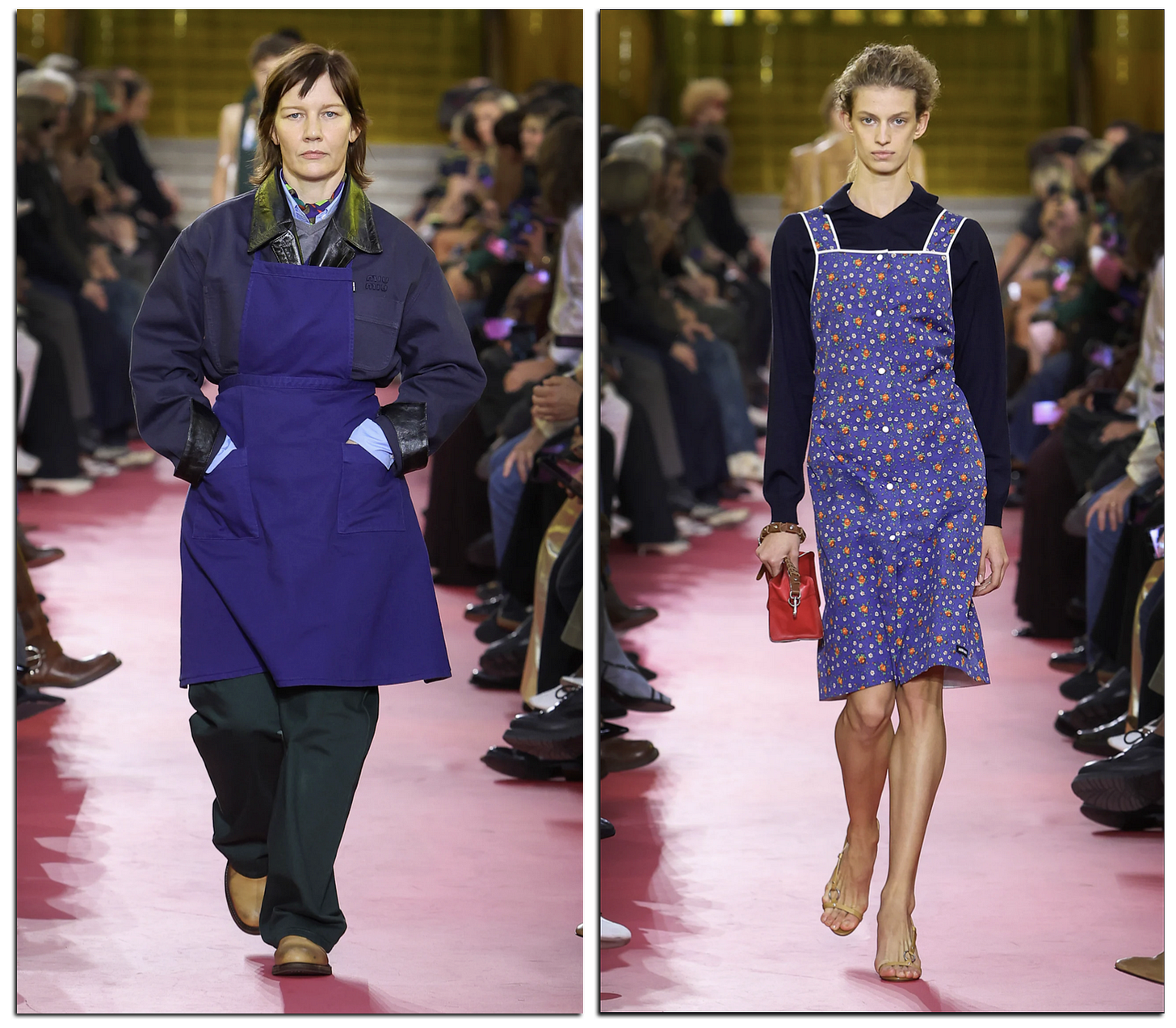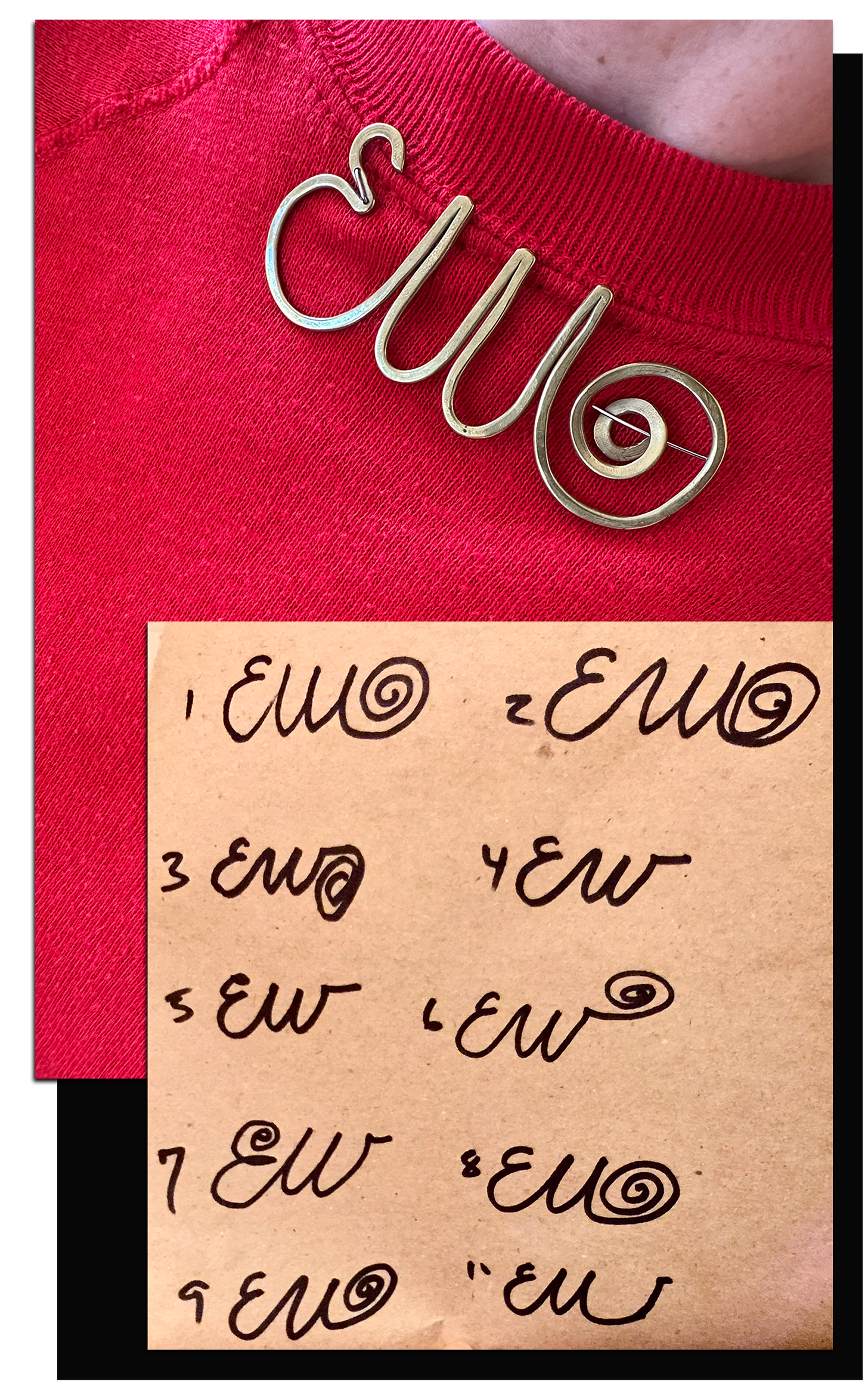Hostile architecture
Does fashion hate women? Plus custom pins, sturdy clogs and boots & more
Welcome to Concorde, Blackbird Spyplane’s “women’s vertical” that the fellas love as well. Every edition is archived here.
Mach 3+ city intel for traveling the entire planet is here.
Our Cool Mom Style Guide is here.
Has fashion — an industry that needs us — always loathed us?
Last Monday, New York Times Styles editor Stella Bugbee posted a series of IG stories about a sense of mounting unease she felt at Paris Fashion Week — a discomfort and dejection that only grew over the course of several shows. “Sometimes,” she concluded, “it feels like fashion hates women.”
I (Erin) was having conversations along similar lines with friends here in California. I wanted to hear more about what Stella had in mind from the frontlines, so the other day, I called her up to talk about it. It turns out I wasn’t alone in my curiosity — hundreds of people had replied to her over DMs, she told me, and tens of thousands more shared and viewed her stories. Our conversation is below.
Also in today’s Concorde:
A fantastic pin-maker I first sleuthed out in 2021 who’s still making extremely sick pieces — instant outfit enswaggeners — deep under the radar
My favorite new accessory from a favorite designer
In Thursday’s sletter, Jonah called out some Swag Galoshes for the fellas. I’ve got chunky, sturdy stompers — clogs, boots and mules — for the ladies
Let’s get to my chat with Stella Bugbee of NYT Styles —
Concorde: A question Jonah and I have asked ourselves in the past is: What’s the point of going to Paris Fashion Week? There can be so much noise burying the signal. Before we get to your IG stories about the things you saw that upset you, what feels useful to you about attending these fashion shows in the first place?
Stella Bugbee: “This season felt highly charged because there was so much change. [Nearly 20 fashion houses hired new designers.] It felt historic, and maybe that’s why the season also feels tense and fraught. Stepping back from this season, though, to why it’s important to go: If you want a full understanding of what these designers are saying and the way that their work is evolving, it’s helpful — if you have access and the privilege — to be at the center of where they’re doing stuff, and to see how they put together this tiny bit of theater to present their ideas.
“It’s just as valuable to go to a showroom, to talk to a designer in person, and to hear what they have to say one-on-one. I actually think both things are helpful. But if you take this stuff seriously, you’ve got to take it seriously. It’s like seeing art in person, or theater, or dance, or any of it. It helps you have a deeper understanding of what people are doing.”
Concorde: That’s a great way to put it. So I dropped you a line after you posted some stories working through … conflicted feelings about the shows. You included a couple examples of things that disturbed you, like the these metal Margiela-logo contraptions that forced women’s mouths open, and the armless onesies at Alaïa (below). What else tripped your wires?
Stella Bugbee: “The biggest thing that’s upsetting me is the Ozempification of the past couple seasons. This one really felt like we crossed some sort of Rubicon. I don’t wanna feel like I have to get plastic surgery, or go on a pill, in order to participate in this world. The majority of my coverage in fashion has coincided with the body-positivity movement and an upsurge in feminism that felt truly and totally dead this season. There was absolutely no attempt to even pretend that that mattered — either in the audience or on the runways.
“It upsets me. Between the actual designs feeling like they weren’t meant for women, and then seeing these extremely emaciated people wearing the clothes, and the literally shrinking front row of movie stars who look so clearly modified in so many different ways… It all added up to this feeling of almost a violence to the season, maybe also in conjunction with what’s happening in the world. Sometimes fashion can be this mirror, and maybe that’s really what it was. But it didn’t feel like it was in control of that conversation. It felt more like it was perpetuating that conversation, as opposed to commenting on it, or critiquing, or offering insight. It felt much more like, Yay, we don’t have to pretend that size 8 matters.”
Concorde: Size 6, even!
Stella Bugbee: “Yeah. There was not even a midsize model in hardly any show I saw. And again, it’s the showgoers, too. I thought a lot about the Margiela mouth before I said anything. I had an instantaneous reaction to it that was quite negative, and whenever that happens, I always question myself. Like, Why are you having a super negative reaction? Is that a good thing, perhaps? What is the designer trying to say? Is he making a point that I need to pay attention to? I have no problem with provocation. I think it’s fashion’s job to make us uneasy sometimes. I don’t think it’s just about making things beautiful or comfortable.
“So that’s not my objection to those mouthpieces per se. Really, is it worse than what I’m actually seeing people voluntary do to themselves? Is it a comment on that? You know, I can’t read another story about how happy someone is with their facelift at the age of 37. So I thought about it a lot, instead of just condemning this kind of grotesque, upsetting, disturbing sight. I asked myself, ‘Is he [Glenn Martens] in control of this message? Does he want me to think about the way that I — the way that women, the way that people — will voluntarily deform themselves to accommodate luxury fashion?’ And I just didn’t believe that that was actually the point.”
Concorde: The fashion industry has always preyed on people’s insecurities, and its visions for women’s bodies haven’t always been something you could call liberatory. This came up in a conversation I had the other day with the author of a biography about Claire McCardell, who designed clothes with ease for working women in the 1940s, that were very distinct from the corseted suits Christian Dior was designing around the same time. So was this basically more of the same, or is there something distinctly new you feel brewing? After you posted those stories, you mentioned that they got a lot of attention — they clearly resonated with people right now.
Stella Bugbee: “I heard from hundreds and hundreds of people, way more than normal. It’s funny, because some of the comments were, ‘Fashion has always hated women.’ And those comments made me feel stupid, like, ‘Right, of course, what’s wrong with me? Why is it taking me until the age of nearly 50 to come to terms with this very obvious fact?’
“Then I got a lot of people saying, ‘It’s just because there’s no women designing at these top houses.’ And while I think there’s some truth to that, I don’t think it’s that simple. To the point of women voluntarily diminishing themselves by taking GLP-1s or getting facelifts they don’t need: we’re not demanding the world we want, so I don’t know that just having female designers would fix it.
“Those were two big threads I heard. Another big one was people saying, ‘I love clothes, I love getting dressed, and this just feels so not for me.’ And other people were saying, ‘I don’t wanna participate in this, and when I see it on Instagram and everybody is so happy and pushing all the looks and saying what they love and only talking positively, I feel extra alienated.’”
Concorde: Meaning, “I don’t wanna participate in fashion?”
Stella Bugbee: “Well, specifically saying, ‘On Instagram it seems like everybody loves everything, everybody’s happy, and you don’t feel like anybody’s willing to say they don’t like anything.’ They feel that even the people they follow are so inside of it that they can’t get real perspective on anything. Not that I’m trying to pretend what I said was some controversial, radical thing.”
Concorde: Criticism is definitely in dire straits. Most of the people who post about fashion week benefit from being positive about it — they’re accepting gifts, they’re hoping for more access, they think the fact that a huge corporation sent them an invitation to a show validates their existence. They’re sometimes traveling to these shows on the brand’s dime, too. I know you don’t do that at The Times — neither do we here at the Plane — but the lines have become so blurred, it’s eroded the ability for most people to be even remotely critical.
Stella Bugbee: “Totally. And look, you do want to give designers a chance to bake. For a lot of them, this was their first season, and you need to see what they do over time. That’s one of the things I admire about Vanessa Friedman in her reviews. I don’t agree that you shouldn’t criticize or that you need to be an expert to criticize. But the fashion community tends to be more celebratory than anything, and there are many financial reasons for that. Period.”
Concorde: Since we’re talking about a systemic hatred for women in the fashion industry: Something I really want to stress is that we can’t just talk about the customer, because the workforce that makes these clothes is overwhelmingly women, too. The garment industry has always been fueled by the exploitation of not just labor, but specifically women’s labor, from the Triangle Shirtwaist Factory a century ago, to women in L.A. factories today being paid piece rates, to these largely unaccountable factory cities overseas. That’s rarely in the conversation, because it’s designed to go unseen.
Stella Bugbee: “Yeah. I was really just focusing on the personal feeling of it myself, but you’re right.”
Concorde: Who’s designing for women well these days?
Stella Bugbee: “I’m hesitant to even say that anybody in a really high-level role was doing it. I saw the Miu Miu aprons… I know that Miuccia Prada’s smart enough and purposeful in her choices, I know she’s got a sense of humor, or a sense of irony. But my first reaction was, ‘Seriously?’ With the tradwife of it all? But I give her enough credit that I’m willing to say that I think it was funny and intentional.”
Concorde: Same. I do love an apron, and think it’s very Prada to be looking at, like, nonnas in their kitchens for inspiration. But yeah, I’ve started to really gravitate more towards women designing for women, particularly at smaller labels. Luxury fashion houses were never about my life, and whereas I used to be more excited by their clothes regardless, I increasingly cannot care.
Stella Bugbee: “Oh for sure, most of them have lost the plot. In general the designers that I gravitate toward tend to be female designers, too. But that’s not the only answer, and I don’t think that just because someone is a woman means she inherently understands women. Women participate in their own subjugation plenty. And there were plenty of male designers who did make clothes that I thought were considerate — even if they showed them on the skinniest people on earth.”
Meanwhile —
The other day I got dressed quickly and simply: Lauren Manoogian black cotton pants, vintage short-sleeve sweatshirt, nothing special.
However! Jonah thought I looked cool(er than usual), because I’d put a pin on the sweatshirt, smack dab in the center of my neckline. He snapped the pic below, posted it to IG, I re-shared it, and people went wild for the ID.
The pin in question is an Alexander Calder-inspired “EW” piece I custom-ordered for not a ton of bread back in 2021, after attempting to track down some authentic Calder jewelry and finding it impo$$ible.
After some signature Unbeatable Recon™, I located a perfect person for the job, who continues to make these— and which are, of course, just as rockable by the fellas:


